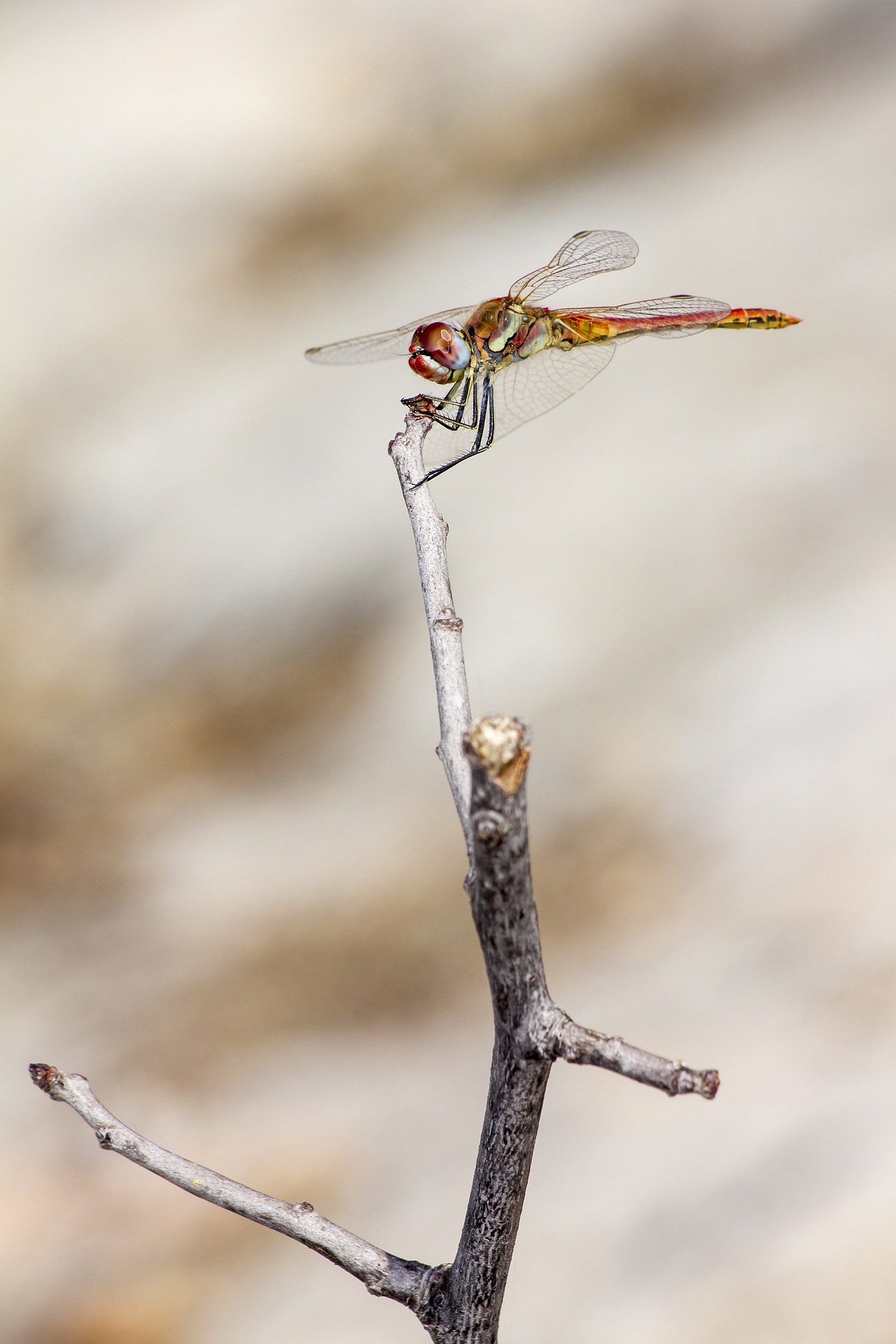Here’s a detailed overview of the Red-veined Darter (Sympetrum fonscolombii), a colorful and wide-ranging dragonfly known for its adaptability and long-distance migrations:
Red-veined Darter (Sympetrum fonscolombii)
Taxonomy & Classification
- Kingdom: Animalia
- Phylum: Arthropoda
- Class: Insecta
- Order: Odonata
- Suborder: Anisoptera (True dragonflies)
- Family: Libellulidae (Skimmers)
- Genus: Sympetrum
- Species: S. fonscolombii
- Common names: Red-veined Darter, Nomad Darter, Red-veined Skimmer
General Description
- Size: 34–45 mm in length; wingspan about 60–70 mm.
- Appearance:
- Males: Bright red abdomen and face; thorax brownish with red tones; red veins on wings (especially near leading edges).
- Females: Yellow-brown body with orange to reddish veins and pale yellow abdomen with thin black lines.
- Eyes: Bicolored—blue-grey below and brown-red above, a key identifying feature.
- Wings: Clear with amber at the wing base and a pale yellowish pterostigma bordered by black.
- Distinguishing traits: The red wing veins and blue-tinted lower eyes clearly separate it from other Sympetrum species.
Behavior & Lifestyle
- Flight period: April to October (longer in southern Europe and tropics).
- Activity: Strong flier, often perching conspicuously on twigs or stones near water.
- Habits:
- Frequently seen basking in sunny, open habitats.
- Males aggressively defend small territories along shorelines or ponds.
- Migration: One of the few truly migratory dragonflies in Europe—regularly colonizes northern regions in summer, even reaching Scandinavia and the British Isles.
Diet
- Adults: Feed on small flying insects—midges, mosquitoes, flies, and other soft-bodied prey caught in mid-air.
- Larvae (nymphs): Aquatic predators eating mosquito larvae, tadpoles, and small aquatic invertebrates.
Life Cycle
- Reproduction:
- Mating occurs in tandem flight over water.
- Eggs are released while the pair is in flight—females dip abdomen to scatter eggs on the water surface or floating vegetation.
- Development:
- Larvae develop quickly in warm conditions, often completing metamorphosis in a few months.
- In cooler climates, eggs overwinter and hatch the following spring.
- Adults: Typically live for several weeks.
Habitat
- Occupies shallow, still, or slow-flowing waters—lakes, ponds, ditches, and marshes, often with sparse vegetation.
- Prefers warm, sunny, and open landscapes such as coastal lagoons, floodplains, and steppe ponds.
- Tolerates brackish and temporary water bodies, allowing it to colonize semi-arid regions.
Distribution
- Native range: Southern Europe, North Africa, the Middle East, and much of Asia.
- Expanding range: Migrates regularly northward into central and northern Europe; recorded even in the UK, Ireland, and southern Scandinavia during warm years.
- Also found: Canary Islands, Azores, and parts of sub-Saharan Africa.
Ecological Role
- Predator: Controls populations of small flying insects such as mosquitoes.
- Prey: Eaten by birds, frogs, spiders, and larger dragonflies.
- Indicator species: Presence signals clean, well-oxygenated, and sun-exposed aquatic habitats.
Conservation Status
- IUCN Red List: Least Concern.
- Population trend: Stable or expanding northward due to climate warming.
- Threats:
- Loss of wetlands and temporary ponds.
- Pollution and eutrophication of freshwater habitats.
- Conservation: Protection of shallow, sunlit wetlands and maintenance of natural water levels.
Interesting Facts
- One of the earliest dragonflies to recolonize newly created or disturbed water bodies.
- Males’ intense red coloration deepens with maturity and warm temperatures.
- Capable of long-distance flights across seas and deserts—records show migrations between Africa and southern Europe.
- Its adaptability and strong flight make it one of the most successful Sympetrum species worldwide.
Visited 6 times, 1 visit(s) today
Views: 112
Subscribe to the newsletter:
